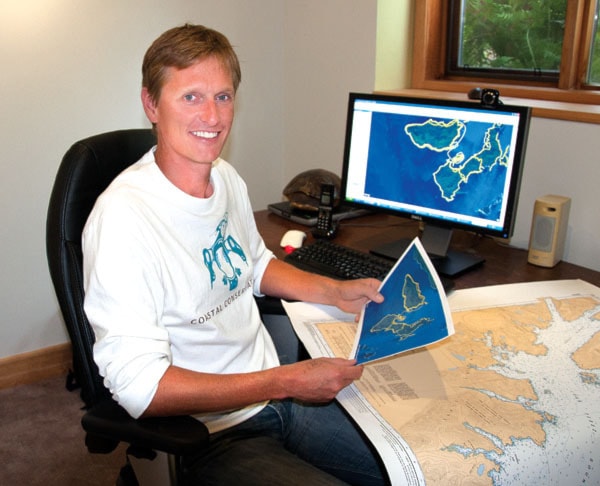A Salmon Arm man is determined to restore ecological balance to the world’s islands.
Founder of Coastal Conservation in 2010, Chris Gill’s organization is focused on the natural restoration of island ecosystems by removing introduced invasive species.
Gill says that while islands occupy less than five per cent of Earth’s land mass, they are home to 15 to 20 percent of the planet’s plant, reptile and bird species.
They also account for an astounding 64 per cent of recorded species’ extinctions – two-thirds of which are caused by introduced species.
“After habitat loss and degradation, introduced invasive species are the second largest cause of biodiversity loss in the world,” he says.
Gill was off to Haida Gwai recently to oversee an aerial program to destroy the Norway and black rats that call two remote islands in Gwai Haanas National Park home.
Norway rats were introduced in the 1700s by early Spanish explorers and black rats later through logging operations – all by boat.
It only takes one pregnant female to ignite a population explosion as rats reach maturity and begin breeding at five weeks of age – and they can have multiple litters per year.
The islands in Gwaii Haanas National Park Reserve and Haida Heritage Site represent extremely important habitat for a variety of marine birds during the breeding and non-breeding seasons, says Gill, whose organization partnered with Parks Canada, the Haida Nation and California-based Island Conservation.
Voracious predators, Gill says rats impact a variety of species and habitat, from plants and seedlings, sea birds and song birds.
“They will impact species right down to intertidal flora and fauna,” he adds. “Removing rats can change ecosystems at all levels.”
In a project that was three years in the planning, helicopters were used to set poisoned bait on the islands impacted by the rodents. Testing is done to make the bait accessible to the entire rat population.
Bait pellets are dyed blue green, a less attractive colour to grain-eating birds, says Gill, noting eradications are timed in fall when the breeding season is over and some birds have already flown south.
“There’s always a short-term risk to other animals, but we’re sure it’s on an individual basis, not population-wide. We balance risk with the need to eradicate the invasive species,” he says, pointing out he worked on the Haida Gwai project with Parks Canada staff five days a week for the past year. “It’s labour intensive and technically challenging, but also extremely rewarding.”
Invasive species removal is a powerful tool for conservation, says Gill, noting that some 450 eradications have occurred worldwide in the past 30 years.
This is the first “aerial broadcast” in Canada and experts were brought in from around the world.
“The world is watching and we want to do it right,” he says, noting the first broadcast was done at the beginning of September and the second three weeks later. In that time 800 hectares of island land was “treated” in approximately 11 hours of flying.
Gill says mitigative methods are used to minimize the impact of the operation and crews walk the islands to pick up the dead rats in order to protect predators such as ravens. All the carcasses are frozen and tested to determine the cause of death.
A biologist with a masters in environmental toxicology, Gill notes Coastal Conservation is also involved in two other large projects: Sydney Island in Gulf Islands National Park where introduced European fallow deer have been destroying one of Canada’s rarest ecosystems, and the Scott Island Archipelago off the north end of Vancouver Island.
The site of the largest sea bird colony south of Alaska, the culprits are mink and raccoon that were introduced in the 1930s as a part of a failed fur farm.
“They ate all the sea birds on two of the five islands and right now on that archipelago, 1.5 million birds are nesting on essentially 150 hectares,” Gill says, noting the rest of the 1,400 hectares are bird-less and eerily silent.
Although Salmon Arm is more than 600 kilometres from the nearest ocean, Gill says that thanks to technology, he can work anywhere as long as he is close to an international airport.
